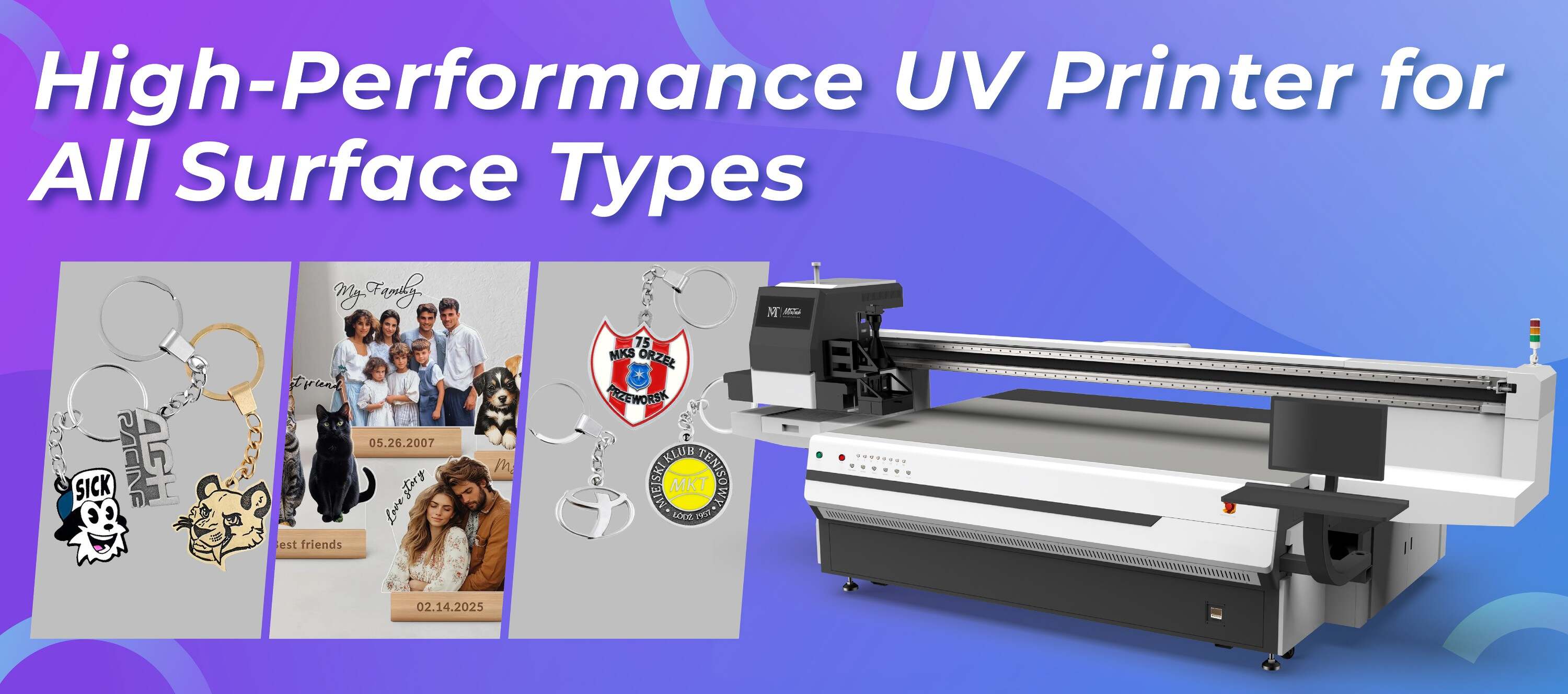Things to Avoid When Operating a Visual Positioning UV Printer
Introduction
Operating a Visual Positioning UV Printer is an exciting venture that opens up new possibilities in the world of printing. However, like any specialized equipment, there are critical missteps that can lead to frustrating outcomes or costly damages. By understanding what to avoid, you can ensure that your UV printing operations run smoothly, efficiently, and to the highest quality standards. In this article, we'll explore the common pitfalls and best practices for maintaining and operating your UV printer effectively.
Understanding Visual Positioning UV Printers
Visual Positioning UV printers are designed to deliver high-precision prints with vibrant colors and sharp details. They utilize UV light to cure the ink instantly, resulting in durable and long-lasting prints. While these printers offer numerous advantages, such as speed and versatility, improper handling can lead to compromised print quality and equipment damage.
Common Mistakes to Avoid
1. Neglecting Regular Maintenance
One of the most significant oversights is failing to perform regular maintenance on your UV printer. Neglecting this can result in a variety of problems, such as ink blockages, color inconsistencies, and even potential equipment failures.
·
Schedule regular cleanings of the print head and ink delivery systems.
·
·
Keep the printer free from dust and debris that could interfere with performance.
·
·
Check and replace worn-out components promptly.
·
2. Using Poor Quality Materials
Utilizing low-quality inks or substrates can drastically affect print outcomes. Cheap materials may not adhere properly, resulting in prints that peel or fade quickly.
·
Always opt for high-quality UV inks that are compatible with your printer.
·
·
Test different substrates to find the most suitable options that yield best results.
·
3. Ignoring Calibration
Calibration is essential for ensuring that your printer produces consistent outputs. Ignoring this can lead to misaligned print placements and color deviations.
·
Calibrate the printer regularly, especially when switching substrates or inks.
·
·
Utilize built-in calibration features that come with most modern printers.
·
4. Overloading the Printer
Each UV printer has a specified workload it can handle. Overloading it can cause mechanical failures and reduced print quality.
·
Check the manufacturer’s guidelines regarding maximum print loads.
·
·
Avoid trying to produce more items than the printer can handle efficiently.
·
5. Inadequate Training
Improper operation due to lack of training can lead to mistakes that impact both equipment lifespan and print quality. It's crucial for operators to be well-versed in the printer's features and functions.
·
Provide comprehensive training sessions for all staff involved in operating the printer.
·
·
Encourage ongoing education as printer technology evolves.
·
6. Skipping Test Prints
Some operators skip test prints to save time, but this can lead to wasted materials and subpar final products. Test printing is a quick way to identify potential issues.
·
Always conduct test prints before starting large production runs.
·
·
Evaluate color accuracy, alignment, and overall quality during test prints.
·
7. Neglecting Environmental Conditions
The environment where the printer operates significantly influences its performance. High temperatures, humidity, or dust can affect equipment and print quality.
·
Keep the printing area clean, cool, and well-ventilated.
·
·
Monitor humidity levels and temperature to ensure optimal operating conditions.
·
8. Failing to Update Software
Outdated software can result in compatibility issues, bugs, and missed features that enhance printer functionality. Regularly updating your software can improve efficiency and performance.
·
Check for updates and apply them routinely to your printer’s firmware and software.
·
·
Read release notes to stay informed about new features and improvements.
·
9. Ignoring Safety Protocols
UV printers utilize UV light, which can be harmful if proper safety protocols are not followed. Prioritizing safety protects both operators and the equipment.
·
Always wear protective eyewear when operating UV equipment.
·
·
Ensure that all staff understand the safety protocols associated with UV printers.
·
10. Forgetting to Document Processes
Lack of documentation can lead to confusion and inconsistency in printer operations. Having a system to document settings, materials used, and other relevant data can streamline future processes.
·
Keep detailed records of print settings, substrate types, and maintenance schedules.
·
·
Regularly review documentation to make improvements where necessary.
·
Conclusion
Operating a Visual Positioning UV printer comes with its unique set of challenges and rewards. By avoiding these common mistakes and adopting best practices, you can enhance your printing operations, ensuring high-quality outputs and an extended printer lifespan. Regular maintenance, proper training, quality materials, and a safe working environment are crucial for success in your printing endeavors.
As you continue to explore the capabilities of your Visual Positioning UV printer, explore our high-quality Visual Positioning UV printers here and let your creativity reach new heights.
FAQ
What type of maintenance do UV printers require?
UV printers require regular cleaning of their print heads, ink delivery systems, and should also have a routine checkup of worn-out parts. Regular maintenance helps prevent issues such as ink blockages and color inconsistency.
Can I use any type of ink with my UV printer?
No, it's important to use high-quality UV inks that are specifically designed for your printer model. Using incompatible inks can lead to poor printing results and potential damage to the printer.
How often should I calibrate my UV printer?
Calibration should be performed regularly, especially when you are changing inks or substrates. It's good practice to do this before significant production runs to ensure accuracy and quality.
What are the best environmental conditions for operating a UV printer?
The ideal environment for a UV printer is cool, clean, and well-ventilated. Monitoring humidity levels and temperature ensures optimal performance and print quality.
Are there safety risks associated with using UV printers?
Yes, UV printers emit UV light, which can be harmful. It's essential to wear protective eyewear and train staff on safety protocols to minimize any risks.

